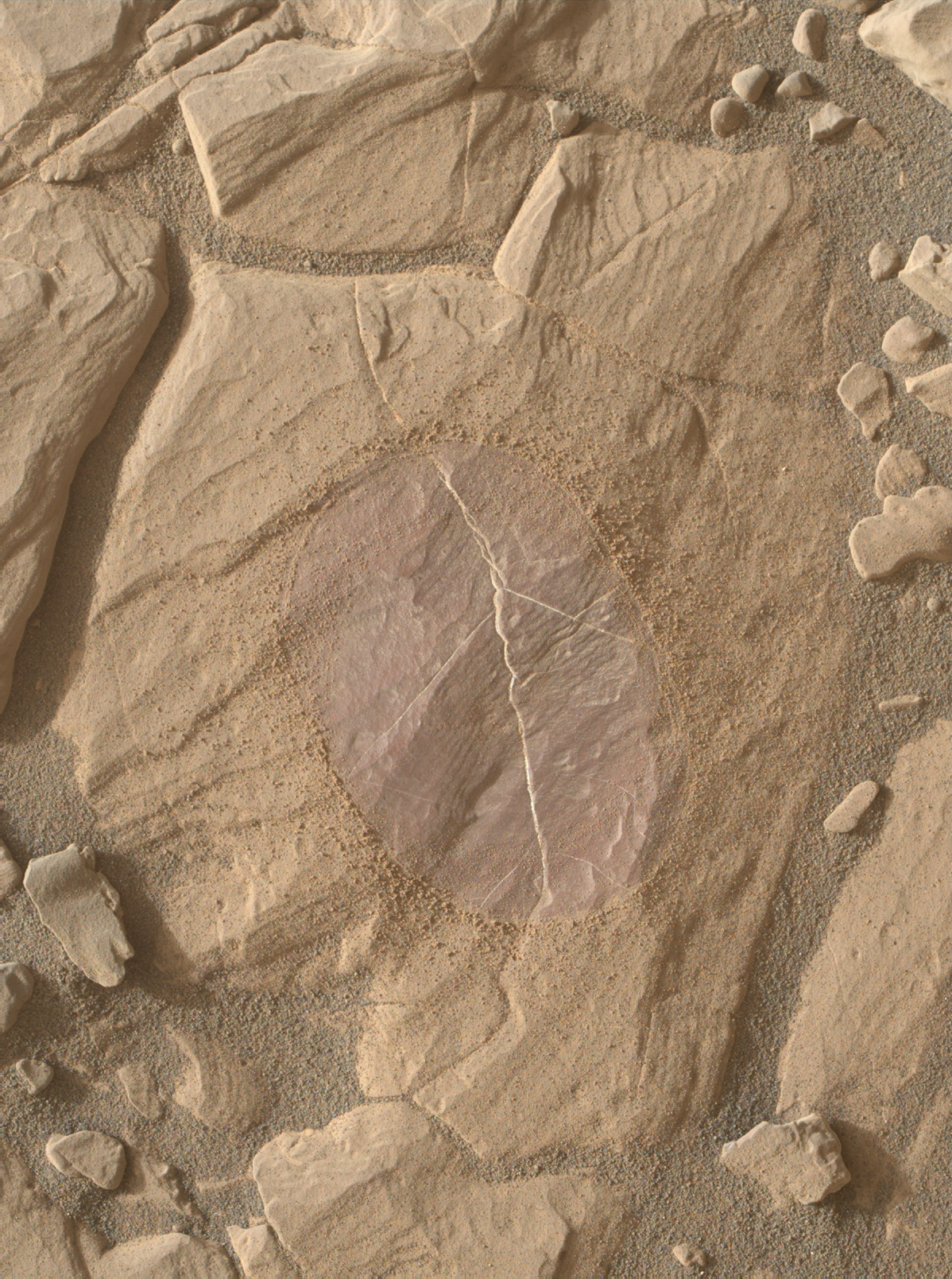Dust Removal Target on ‘Vera Rubin Ridge’

| Credit | Credit: NASA/JPL-Caltech/MSSS |
|---|---|
| Language |
|
This image from the Mars Hand Lens Imager (MAHLI) camera on NASA's Curiosity Mars rover shows effects of using the rover's wire-bristled Dust Removal Tool (DRT) on a rock target called "Christmas Cove."
The tool brushed an area about 2.5 inches (6 centimeters) across on Sept. 16, 2017, during the 1,118th Martian day, or sol of Curiosity's work on Mars. MAHLI took this image later the same sol. Both DRT and MAHLI are on the turret of tools at the end of Curiosity's arm.
The site is partway up "Vera Rubin Ridge" on lower Mount Sharp, in an area where reconnaissance imaging with science filters revealed variability in indications of the mineral hematite. Removing dust from part of the Christmas Cove target was part of an experiment to check whether dust is subduing the apparent indications of hematite in some of the area's bedrock. The brushed area's purplish tint in this MAHLI image, accentuated even more when observed with science filters of the rover's Mast Camera, is characteristic of fine-grained hematite.
Brushing of this target also exposed details in the fine layering and bright veins within the bedrock of this part of Vera Rubin Ridge. The image is oriented so that sunlight comes from upper left. Layers are lower (older) toward lower right.
MAHLI was built by Malin Space Science Systems, San Diego. NASA's Jet Propulsion Laboratory, a division of Caltech in Pasadena, California, manages the Mars Science Laboratory Project for the NASA Science Mission Directorate, Washington. JPL designed and built the project's Curiosity rover.
More information about Curiosity is online at http://www.nasa.gov/msl and http://mars.jpl.nasa.gov/msl/.
